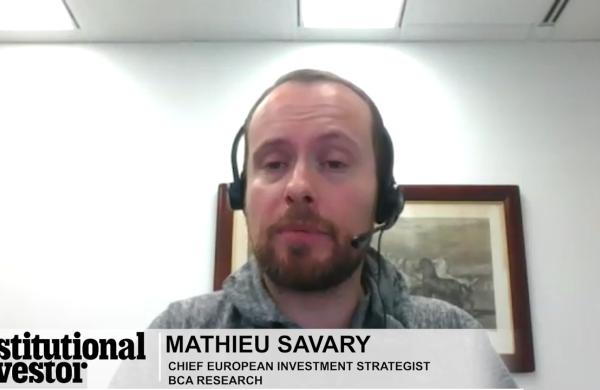Reaching for return: Low interest rates and bad stock markets are creating opportunities as well as causing headaches.
By Jo McBride
December 2001
Institutional Investor Magazine
For the complete Asia 100 Results please go to the Research section of this site.
Asian institutional investors, like Asian stock markets, are under stress as global economies cool and global politics heat up. Most of the region's economies are faltering, and Asian stock markets are depressed but volatile. Meanwhile, deposits are generally hovering around zero.
To try to eke out more of a return under these unforgiving circumstances, institutional investors are pursuing investments, such as hedge funds, that purport to minimize market risk. For their part, retail investors are seeking out investments that they believe they can count on, like "guaranteed" mutual funds.
These and other trends have had mixed effects on Asian asset managers in our annual rankings. Generally speaking, though, it's been a tough year all around. Many firms saw their assets under management decline. In Japan the Postal Life Insurance Bureau - Kampo - came out on top, as usual. But last year's No. 2, Chuo Mitsui Trust & Banking Group, traded places with the No. 3 Nippon Life Insurance Group. Australia's AMP Henderson Global Investors again placed atop that country's ranking, by a wide margin, as did Hong Kong SAR Exchange Fund on that island. Among international managers, the most conspicuous shift was Deutsche Asset Management's surge from No. 12 in 2000 to No. 2 (replacing Schroder Investment Management, now No. 5). Chief reason: Deutsche Bank's purchase of Bankers Trust Co.
One development likely to have an enduring impact on the region's asset managers is Asian governments, slow-motion shift to employer-run defined contribution schemes. Within the past year both Japan and Hong Kong have introduced these plans. And in a parallel trend, more and more state-run Asian defined benefit plans are turning over a portion of their money to private managers.
Starting October 1 Japanese companies could begin offering their employees defined contribution plans as supplements to or substitutes for their defined benefit schemes. The Japanese defined contribution market is potentially gigantic. Dai-Ichi Life Research Institute forecasts that the assets of corporate-sponsored defined contribution plans will climb to about ¥12 trillion ($98.8 billion) within ten years and that the assets of individual defined contribution plans for the self-employed and for employees of companies not offering pension arrangements could reach ¥8 trillion.
Defined contribution plans are likely, however, to get off to a poky start for a couple of reasons. First, at least half of a company's workers must approve of a shift to a defined contribution scheme, and ordinary Japanese have only lately begun to discover mutual funds. They keep a mere 2.5 to 3 percent of their ¥1,400 trillion in personal savings in such funds, squirreling away the bulk in bank and post office savings accounts.
Second, the breaks aren,t as generous as they might have been. With company-sponsored defined contribution plans, employers must make all the contributions, in contrast to the U.S., where, typically, both employees and employers chip in. If a company also maintains another pension plan, such as a defined benefit scheme, its annual corporate tax deduction on the defined contribution plan is capped at just ¥216,000 per employee, or about $1,777. If the defined contribution plan is the company's sole pension provision, it can deduct ¥432,000. For individual defined contribution plans, the tax-deductible limit is ¥816,000 for a self-employed person but only ¥180,000 for an employee whose company offers no pension.
Asked to estimate the number of company-sponsored plans that are likely to be set up in the next 12 to 18 months, Toshikazu Nishimura, senior relationship manager of major defined benefit plan manager DLIBJ Asset Management Co., hazards a guess of "maybe ten to 20." But after that, he says optimistically, "Who knows?"
In time Japan's prodigious savers ought to make diligent participants in defined contribution plans. Once resigned to six-month term-deposit rates of 0.01 percent, the Japanese have been cautiously transforming themselves into securities investors, despite their country's recession-mired economy. One reason, suggests Takanori Shimizu, director and senior executive officer of investment management research at Nomura Asset Management Co., is that starting next April the government will no longer guarantee bank accounts of more than ¥10 million. The bonanza would be all the better, asset managers suggest, if fees were to rise.
This year, according to figures from Japan,s Investment Trusts Association, the chief beneficiaries of an outflow from time deposits have been bond and money management funds; their total assets under management rose, respectively, 12.1 percent, to ¥26 trillion, and 6.4 percent, to ¥18.8 trillion, over the 12 months ended July 31. Stock funds likewise attracted more money but still saw their total assets dip 9.5 percent, to ¥15 trillion, amid lousy equity markets at home and abroad.
The bigger of Japan's 1,800 defined benefit plans have started to look at funds of hedge funds as a means of minimizing market risk, notes Masafumi Hikima, executive director of Nikko Asset Management Co. "Following the huge losses they suffered last year," he says, "they are looking for something that targets an absolute return."
Among midsize Japanese defined benefit plans, passive management has been steadily growing in popularity and today represents about 40 percent of their stock portfolios, estimates DLIBJ's Nishimura. Many plans are disillusioned with active managers and appreciate passive managers, rock-bottom costs.
South Korea's National Pension Corp., which has stewardship of contributions to the 63 trillion won ($48 billion) state defined benefit system, awarded its maiden domestic equity mandates late last year. By spring the NPC had doled out W800 billion to a dozen domestic firms, as well as to Franklin Templeton. The U.S. firm's Seoul branch collected W50 billion (at fees of 0.30 percent, with a performance kicker). The NPC plans to hold a beauty contest before the year is out to invest some W200 billion in foreign securities.
More government money may be coming down the pipeline. The South Korean Ministry of Finance and Economy has proposed tapping into 38 plans set up for public or semipublic employees to establish an institution to farm out roughly W5 trillion of the plans, W18 trillion to outside managers, including foreign-owned ones. The snag is that the schemes are regulated by the Ministry of Health and Welfare, which could cause a turf war with the Finance and Economy Ministry.
In Taiwan the Public Service Pension Fund awarded its first-ever domestic-equity mandates to private asset managers in July: 12 billion Taiwan dollars ($434 million) to nine institutions, including U.S.-owned JF Funds. Fees reportedly started at 0.45 percent. A second round worth NT$15 billion, also for Taiwanese stocks, is expected before year-end. In addition, Taiwan's Labour Insurance Fund is planning to parcel out NT$10 billion in domestic-equity mandates by December and three times that amount in 2002. The country's civil service pension plan intends to invest $50 million in foreign mutual funds.
Hong Kong's Mandatory Provident Fund, launched last December as a mandatory defined contribution plan for all Hong Kong workers, has so far approved 170 stock and balanced mutual funds and 103 bond funds, both domestic and foreign. As of the end of May, total assets stood at HK$22.4 billion ($2.87 billion). Front-end fees on the funds that have passed muster with the MPF range from 1.25 to 6 percent, while annual management charges can run anywhere from 0.8 to 2.5 percent.
Back when the MPF was on the drawing board, unions were adamant that, along with conventional stock funds, the plan provide so-called capital preservation and guaranteed vehicles as a form of insurance for investors. The investment industry resisted, but the unions, apprehensions prevailed and now, of course, appear prescient. Capital preservation vehicles, which guarantee that investors will get back at least their contributions, account for 13 percent of the MPF,s assets, and guaranteed funds, which assure investors of getting back their capital while making a certain return, make up 22 percent.
Guaranteed funds are catching on with Asian investors. On September 10, Schroders Investment Management (Hong Kong) launched the fourth in its series of guaranteed-return funds. In the tense days that followed the World Trade Center attack on September 11, the firm offered investors the chance to "unsubscribe." But no one did, says Simon Rigby, the firm's regional managing director for North Asia.
Singapore has seen a boom in sales of guaranteed funds. South Korean investors also seemed to represent an enthusiastic market, until Seoul's Financial Supervisory Service slammed the door after Schroders and Citicorp Asset Management had successfully introduced such funds. "With one issue we doubled the size of the offshore fund market in Korea," says Chris Andrews, head of Asian retail business for Citicorp Asset Management out of Singapore. "It raised $150 million, with a management fee of 0.7 percent."
Why did the South Korean regulator clamp down? Franklin Templeton's South Korea chief Michael Reed offers this explanation: "The way it works here is that the investment community does not design products. The FSS designs products and tells the [investment trust management companies] what they can go and sell. It is a command economy." Guaranteed funds surfaced outside of its domain, and the FSS realized only belatedly that the Bank of Korea wouldn,t necessarily look with favor on the offer of a U.S.-dollar-denominated fund. The FSS has hinted of late that it might allow principal-guaranteed funds in the future, provided they invest in the local market.
Such funds can get a little complicated. To be able to guarantee investors that they will receive back a specified amount at the end of a given term (typically two to four years), offerings for guaranteed funds must have a dollar-amount cap. As soon as this sum is raised from investors, about 85 percent of it is put into paper, such as zero-coupon bonds, that can be counted on to provide 100 percent of the capital backing when the paper matures, along with the fund, at a set redemption date.
The remaining 15 percent goes into a riskier play, often an over-the-counter call option on one or more baskets of specified securities. The contribution from this portion, of course, depends on both the performance of the underlying assets and the extent to which the option agreement permits the fund to participate in that performance.
Critics of guaranteed-return funds wonder out loud if retail customers grasp what they,re getting into. These funds are "much too complicated for amateurs to understand," contends Hideto Matsubara, a senior consultant at Daiwa Research Institute, who studied the funds, suitability for Japan's new defined contribution plans.
What causes greater concern among regulators and many investment managers is that investors may have no idea how much of an impact guaranteed funds, stiff management fees - 1.5 to 2 percent, on top of front-end loads of up to 3 percent - will have on their returns. All charges must be paid at the time of subscription, and investors forfeit them along with the guarantee if they redeem early.
"Anyone can build this sort of portfolio. There is no need to pay fees for it," says Douglas Naismith, senior director of institutional business at Fidelity Investments Management (H.K.). He fears that managers, "main tasks will be to cope with a backlash against these products in 18 months." But he also concedes that "there is a place for them, and I have no doubt that they will deliver what they say." But very few investors, he says, have "any real idea of how much they cost." Fidelity does not sell guaranteed funds in Hong Kong and has no plans to do so.
Andrews of Citicorp Asset Management, which has sold guaranteed funds in Hong Kong as well as South Korea, says, "Primarily, my concern is to what extent information is exaggerated, and the potential exists for misselling and misinterpretation." Stewart Aldcroft, managing director at Investec Asset Management Asia, a big supporter of such funds from the start, allows that "the biggest drawback of guaranteed funds is when they are not transparent." However, he also suggests that much of the criticism of the funds within the investment industry is sour grapes.
For the complete Asia 100 Results please go to the Research section of this site.





